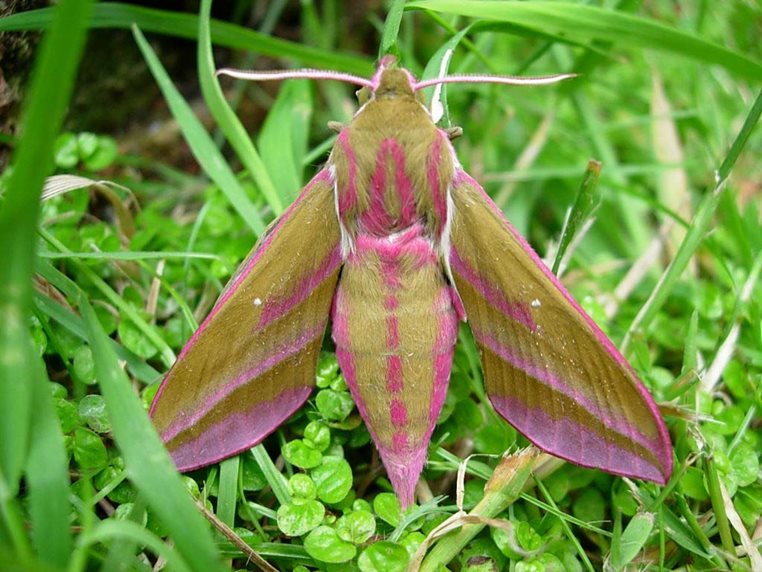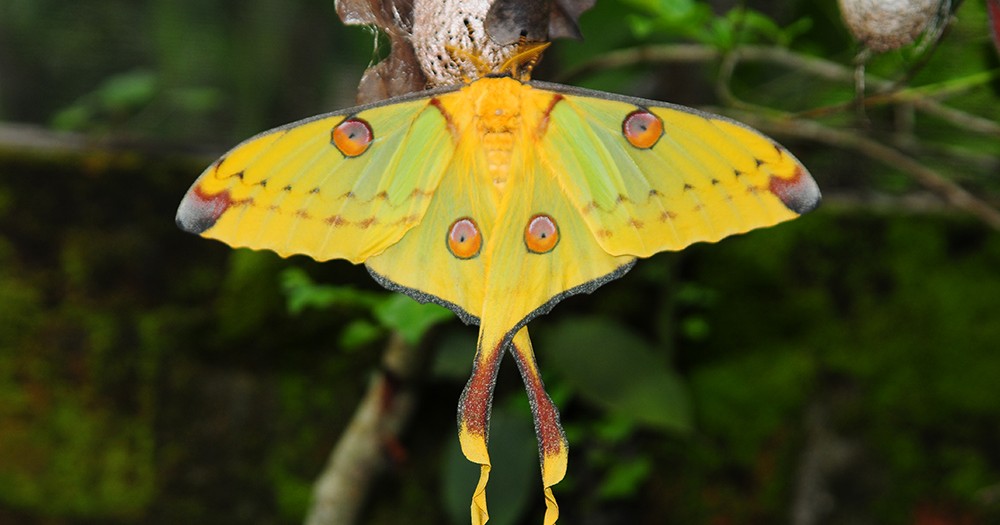Elephant Hawk-Moth (Deilephila elpenor)
Elephant hawk moth of the Sphingidae family stands out from most other species because of its large size and pinkish-olive coloration. The moth has a close resemblance to an elephant’s trunk in its caterpillar stage, resulting in its name.
images.saymedia-content.com
Scientific Classification
- Family: Sphingidae
- Genus: Deilephila
- Scientific Name: Deilephila elpenor
Description and Identification
Caterpillar
When young, the larvae have a yellowish-white or green body. Upon maturation, they become brownish-gray with black dots. They even have a horn or a backward-curving spine on the last abdominal segment, as well as two black eyespots close to their head. Color variations exist, and in certain elephant hawk moth species, the matured larva may appear green. Their overall height is 7.62 cm (3 inches), while their weight ranges from 0.14 – 0.26 pounds.
Pupa
The transition from the larval to the pupal stage takes about 27 days on average. The pupae have a brown body, also marked with dark brown speckles. The division between each of the segments appears black. The average length of the pupa is 4 to 4.5cm.
Adult Moth
Sexual Dimorphism: Present but not prominent
Color and Appearance
Forewings: When opened, the forewings appear olive-brown bordered in pink. When closed, the color is the same, olive background with a combination of pink lines.
Hindwings: When opened, a part of the hindwings is black, turning pink towards the center, bordered with white fringes. When closed, the color and pattern remain unchanged.
One of the most striking features is the two pink lines running down its abdomen. Its head, body, and thorax are also olive-green with pink markings all over.
Average Wingspan: 4.5 – 6 cm
Flight Pattern: Swift and erratic
Season: May-August
Quick Facts
| Other Names | Large elephant hawk moth |
| Distribution | Mostly occurring in Central Europe |
| Habitat | Grasslands, sand dunes, hedgerows, heathlands, woodlands, countrysides, and gardens |
| Predators | Spider species, particularly the brown huntsman |
| Lifespan of Adults | About 5 weeks |
| Host Plants | Himalayan balsam, rosebay willowherb, fuchsia, bedstraw, dahlia, lavender |
| Adult Diet | Nectar of flowers that produce nectar or remain active at night |
Did You Know
- The larva and even the adult moths appear big and fierce, yet they do not bite and are not poisonous to humans and pets.
- The elephant hawk-moth is not to be confused with the small elephant hawk moth, both belonging to the same family, also bearing a close resemblance though with prominent visible differences. The latter is smaller lacking the thick abdominal stripes present in the former.
Scientific Classification
- Family: Sphingidae
- Genus: Deilephila
- Scientific Name: Deilephila elpenor












